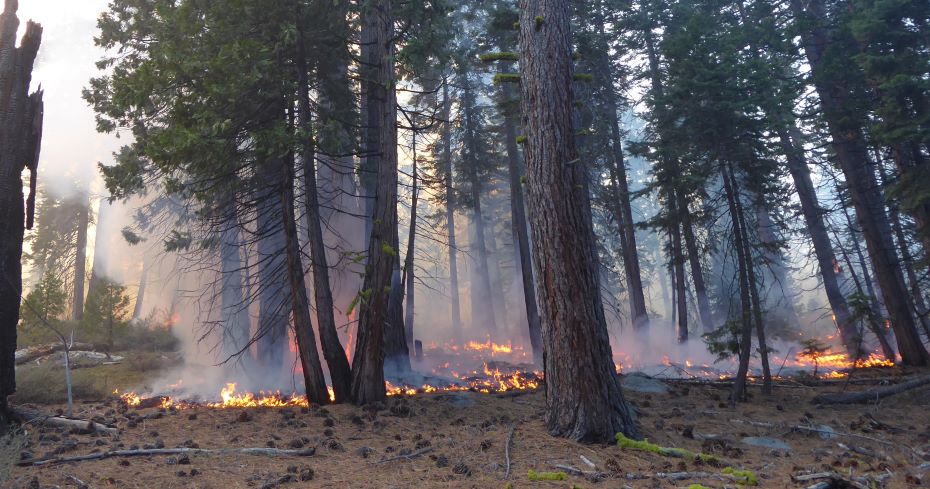
Sep 12, 2023
 By Kathleen McIntyre, Ph.D.
By Kathleen McIntyre, Ph.D.
Special for the Tahoe Mountain News
Tahoe’s forests influence our lives in many ways. They perfect Tahoe’s scenery, offer peacefulness on a hike, and form the cornerstone of a functioning ecosystem where a healthy forest supports a healthy lake. The ever-growing threat of wildfire in the basin has become just as much a part of our life in the forest.
For thousands of years, the forests in the Lake Tahoe Basin took care of themselves. Low intensity fires crept through the forests, clearing underbrush and thinning tree stands. In the 19th century, pioneers clear-cut the basin’s forests, responding to a need for timber in the silver mines of the Comstock Lode. Today, Tahoe’s forests are overcrowded and littered with dead and dying trees making them an easy target for catastrophic wildfire.
Changing this is a massive undertaking in which everyone plays a role, and incredible progress is being made at all levels. Following the devastating Angora Wildfire in 2007, the Tahoe Regional Planning Agency (TRPA) has maintained sharp focus on helping improve basin-wide coordination, streamlining policies, and significantly ramping up public funding for forest health projects.
To date, Tahoe Fire and Fuels Team (TFFT) partners have reduced forest fuels across more than 92,000 acres, with 71,000 acres of that since the Angora Fire. Some of these projects helped firefighters save Lake Tahoe from the 221,000-acre Caldor Fire just 24 months ago. Since the Caldor, there is a new tempo, advancements in strategy, and expanded coordination around evacuation preparedness that are leading the basin forward.
Forest Resilience
As climate change continues to alter Tahoe’s ecosystem, traditional fuel reduction is being scaled up. TFFT partners continue to plan and prioritize fuels treatments in the wildland-urban interface, where neighborhoods meet forests. Together we are more than halfway to their goal of completing an additional 22,000 acres of treatments in these areas by 2025.
Strategies are also being broadened in alignment with the National Cohesive Fire Management Strategy to include more use of prescribed fire, among others. Over the past two years, 2,100 acres have been treated by prescribed fire, including understory burns and burn piles.
Power Line Resilience Corridors
In the era of mega-fires and increasingly powerful storms, utility providers on both sides of the lake are working with public land managers to increase clearance around high-voltage lines while also conducting fuels treatments in the same zones. Last year, utility companies worked with TFFT partners to treat 570 acres of power line resilience corridors in Nevada and more than 300 acres in California, where an additional 500 acres are planned. This new partnership and innovative approach to forest resilience requires seeing the forest fire for the trees and recognizing that safety goals can be achieved while also improving and protecting the integrity of the forest.
Homes and Neighborhoods
Removing excess vegetation on individual lots is also an important piece of the puzzle. Fire agencies conducted a record 7,960 defensible space inspections last year to give homeowners a plan to make their properties safer. Since 2008, inspectors have conducted a whopping 63,000 evaluations. Public agencies have finished initial treatments on more than 7,000 conservation lots spread throughout Tahoe neighborhoods and continue to actively manage these open spaces. More property owners are acting together as well. The Tahoe Network of Fire Adapted Communities has grown to 24 neighborhoods that are coordinating defensible space and evacuation preparedness, with some getting access to better insurance rates.
Evacuation Preparedness and Coordination
Concerns about emergency preparedness and evacuation are reverberating throughout Lake Tahoe communities. Our hearts go out to the residents of Lahaina, Hawaii and the many others affected by recent disasters. The tragedy on Maui hit especially close to home with the Caldor evacuation so fresh in our memory. Earlier this year, TRPA joined regional emergency response and fire agencies to improve evacuation coordination and learn where we can provide the greatest assistance.
To help get people out of the basin safely in an emergency, TRPA is learning that we must maintain our supportive role working with local law enforcement. We will also continue working with partners to secure funding to keep up forest fuel reduction work along evacuation corridors and around critical utility and communications infrastructure. Upgrading water infrastructure to improve fire suppression is also a major priority of the Lake Tahoe Environmental Improvement Program.
Increasing Capacity for a Healthy Forest
TFFT is focused on increasing capacity to continue to improve forest health and address the worsening impacts of climate change. Not only through additional funding, but also by finding more solutions for biomass utilization and material transport, expanding the use of prescribed fire, and increasing investment in the local fire and forestry workforce. Examples of these can already be seen in the new sawmill in Carson City, the successful 13-acre understory burn conducted in June by the USDA Forest Service on South Shore, and the new forestry program at Lake Tahoe Community College that is guiding graduates to high-demand jobs in the region.
TRPA and our partners are committed to reducing wildfire risk and restoring our forests to a more natural and safer condition. With everyone’s help, we can preserve the best traits of Tahoe’s forests while keeping communities safe and protecting the lake. Find out more at tahoelivingwithfire.com.
Dr. Kathleen McIntyre is the forest health and Environmental Improvement Program manager for the Tahoe Regional Planning Agency. She holds a Ph.D. in forest sciences from Colorado State University.
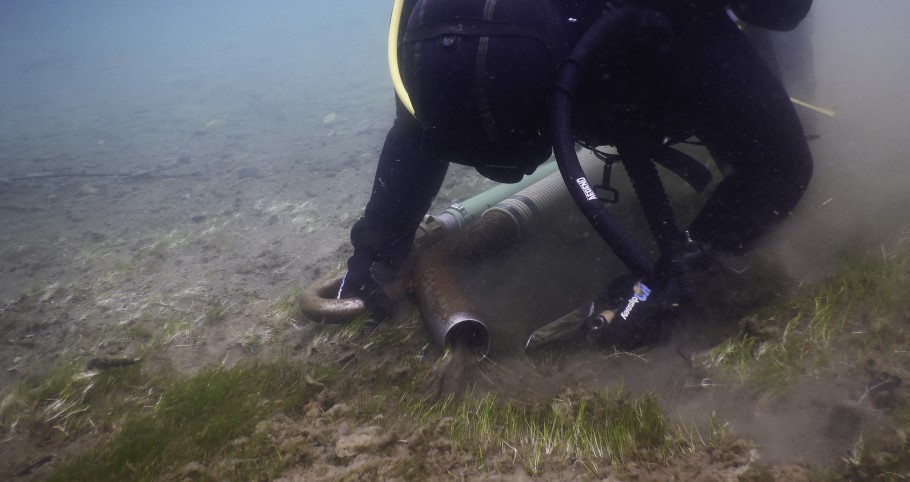
Sep 11, 2023
SOUTH LAKE TAHOE, Calif. – Starting today, divers will begin removing aquatic invasive plants in Emerald Bay, the Tahoe Regional Planning Agency (TRPA) announced today. Control of this one and a half-acre Eurasian watermilfoil infestation in the iconic location will help protect the region’s ecosystem and water quality.
“Thanks to a coordinated and collaborative effort, when invasive plants were discovered in Emerald Bay last fall, TRPA and Tahoe Resource Conservation District were able to quickly mobilize to secure permits, funding, and contractors to attack this infestation before it grows out of control,” said TRPA’s aquatic invasive species program manager Dennis Zabaglo.
The Environmental Improvement Program (EIP) highlights the control of aquatic invasive species as a top priority for regional watershed health. A decade ago, EIP partners treated 6 acres in Emerald Bay for aquatic weeds and declared it weed-free. Now, annual surveillance efforts by contract scuba divers and a California State Parks dive team help detect any invasive weeds and trigger removal efforts to prevent species like Eurasian watermilfoil from establishing in the bay.
“This popular area attracts boaters from around the lake, and the underwater California State Park is under constant threat of reintroduction,” said Courtney Rowe, Senior Environmental Scientist with California State Parks. “When boats bring fragments of Eurasian watermilfoil from other parts of the lake, they can quickly become an infestation without ongoing monitoring and response.”
Aquatic invasive plant infestations threaten water quality, aquatic ecosystems, and recreation. Once established, they are more complicated and costly to remove, making quick response crucial for success.
Critical funding from the Lake Tahoe Restoration Act and Tahoe Fund has made it possible to quickly address this infestation.
“Lake clarity is at the center of what makes Tahoe iconic, and improving this famed clarity is a major priority for the Tahoe Fund,” said Amy Berry, CEO of the Tahoe Fund. “We were pleased to provide $50,000 for the removal of these weeds in Emerald Bay and will continue to support aquatic invasive species removal efforts that positively impact the health of our lake.”
Divers will be suctioning and hand pulling these weeds in various locations around Emerald Bay from Monday, September 11 through Friday, September 22. Agencies remind boaters to respect the 5 mph no wake zone and be mindful of contractors above and below the water for everyone’s safety.
Learn more about the project at https://eip.laketahoeinfo.org/Project/FactSheet/01.03.01.0025.
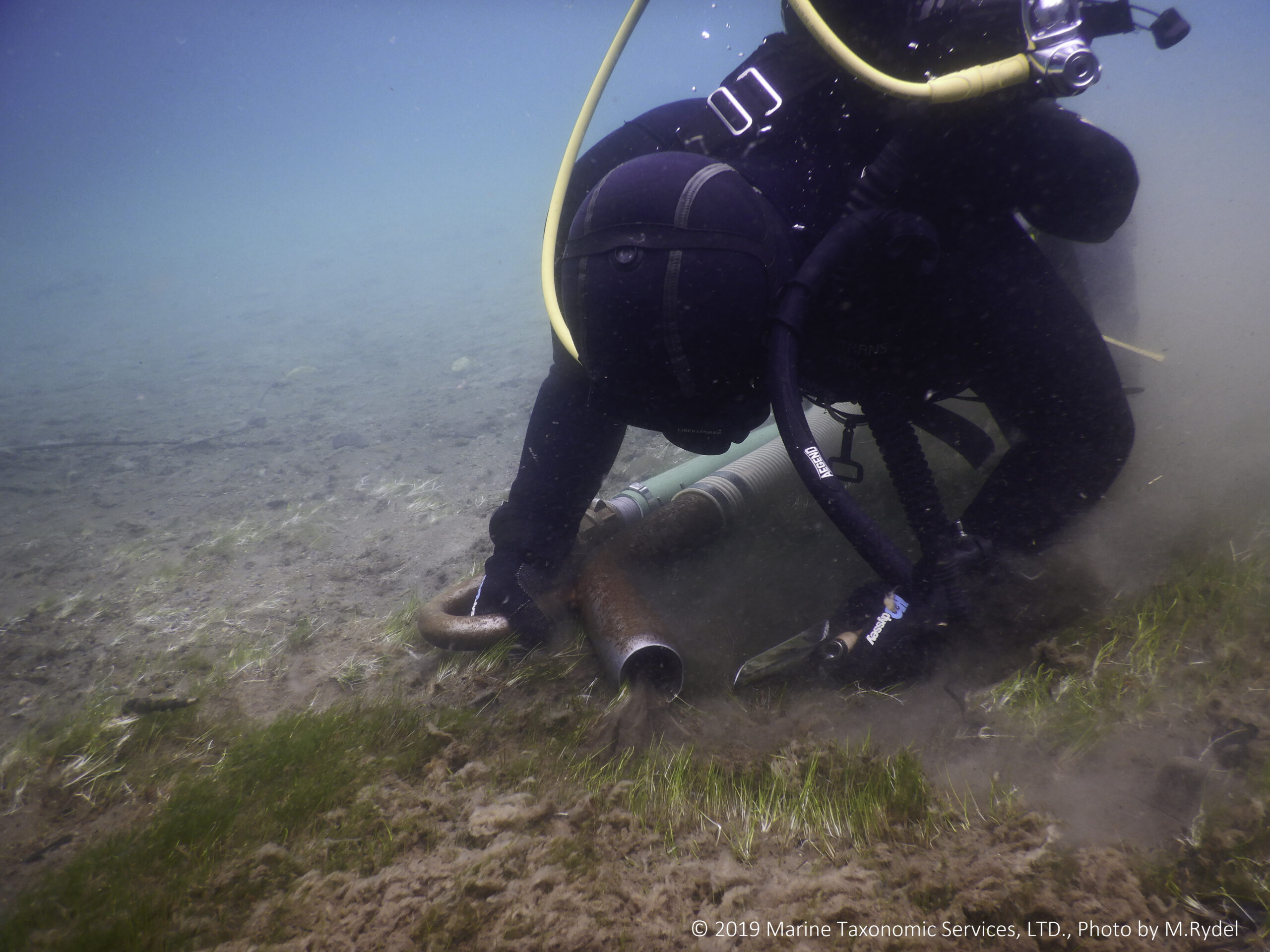
Photo Caption: Divers will be removing aquatic invasive plants from Emerald Bay September 11-15, 2023. Agencies remind boaters to respect the 5 mph no wake zone and be mindful of contractors for everyone’s safety. Photo Credit: M. Rydel, Marine Taxonomic Services
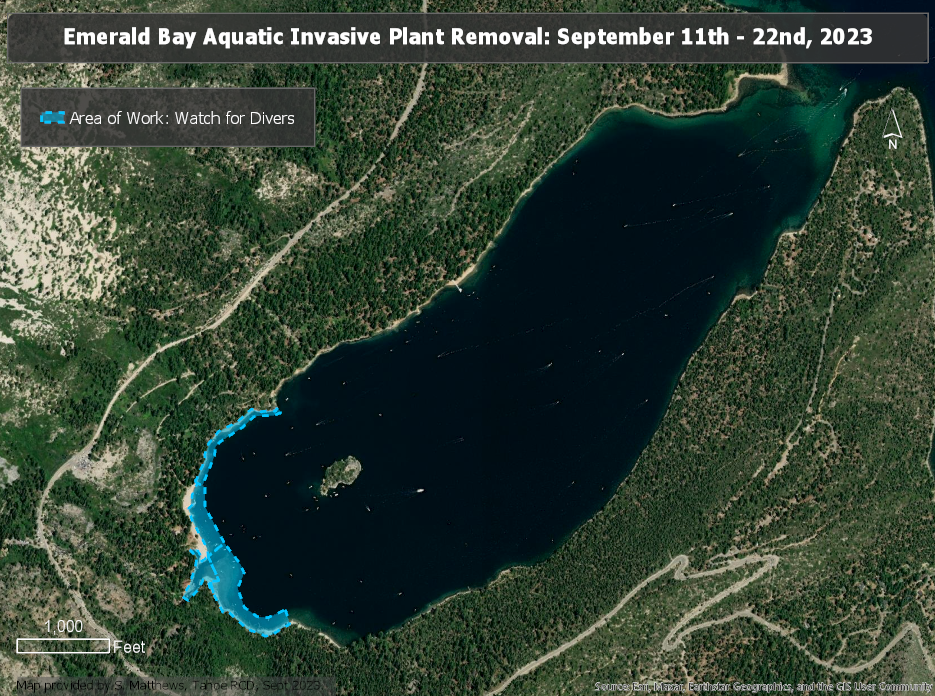
Photo caption: A map of the area of work where divers will be removing invasive plants from a one-and-a-half-acre infestation in Emerald Bay. Map provided by: Sara Matthews, Tahoe Resource Conservation District.
###
The Tahoe Regional Planning Agency leads the cooperative effort to preserve, restore, and enhance the unique natural and human environment of the Lake Tahoe Region, while improving local communities, and people’s interactions with our irreplaceable environment. For additional information, contact Jeff Cowen, Public Information Officer, at 775-589-5278.
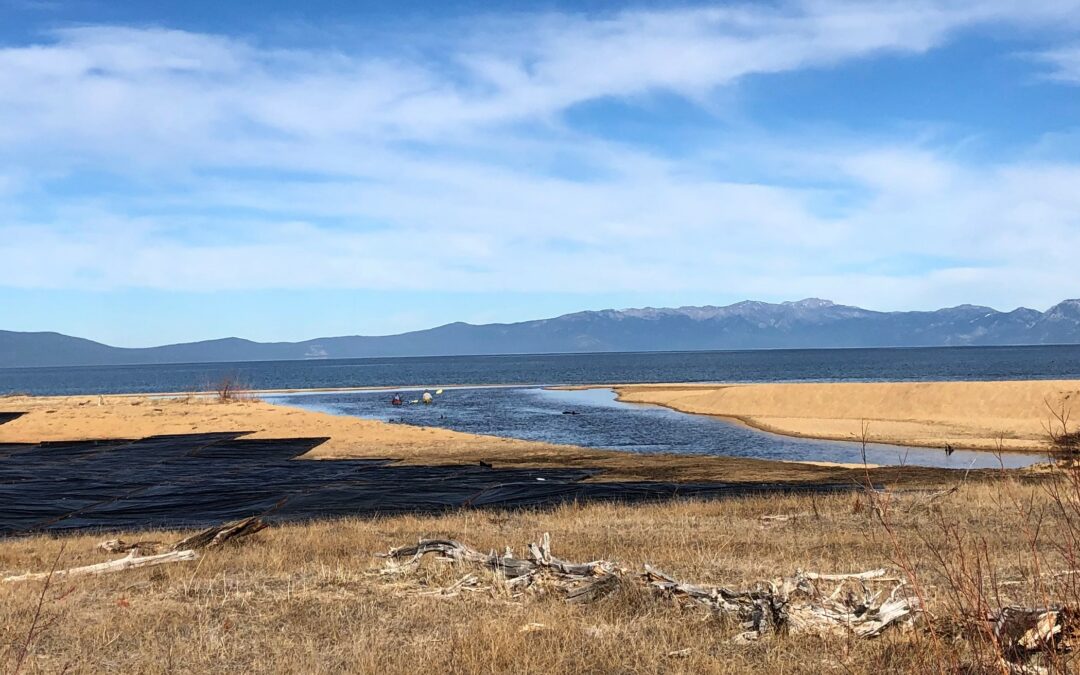
Sep 7, 2023
INTERAGENCY NEWS RELEASE
Contact: Victoria Ortiz, 775-589-5251 or Lisa Herron, 530-721-3898
For Immediate Release September 6, 2023
Invasive Plant Barrier Installation Complete at Popular South Shore Marsh
Public reminded to stay out of fenced areas
SOUTH LAKE TAHOE, Calif. – Agencies restoring the Taylor and Tallac marsh areas have completed the installation of bottom barriers to remove 17 acres of invasive plants as part of the comprehensive restoration of one of the last natural wetlands in the Lake Tahoe Basin, the USDA Forest Service Lake Tahoe Basin Management Unit (LTBMU) and Tahoe Regional Planning Agency (TRPA) announced today. The collaborative project that began in December 2021 is one of the largest aquatic invasive species control projects ever undertaken in the Tahoe Basin.
“We’ve appreciated the public’s patience and cooperation as our contractors have been installing the barriers the last couple of years,” said Sarah Muskopf, aquatic biologist with the LTBMU. “Unfortunately, these marshes are infested with aquatic invasive species that threaten the ecosystem, and installing these barriers is a critical first step in restoring the area.”
Crews have staked large tarps known as bottom barriers to the bottom of the marsh to starve invasive weeds such as Eurasian watermilfoil of sunlight. Bottom barriers are commonly used in the Tahoe Basin to control infestations. Laying the barriers followed significant prep work by agency staff and volunteers from the local youth group Generation Green and Blue Waters Exchange, a Forest Service program that brings young adults from California and Hawaii together to explore cultural and natural resource issues facing both states.
The tarps are expected to remain in place through 2026. Crews will be monitoring the area throughout the treatment to ensure the barriers remain in place.
The agencies say residents and visitors have a crucial role in the restoration as well. Success of the project requires staying away from bottom barriers and out of fenced areas. Ensuring boats, paddle craft, and water toys brought to Tahoe are Clean, Drained, and Dry will further reduce the threat of new invasive species. The public is also asked to share official information about the project with others and to send any questions to the project team by visiting https://eip.laketahoeinfo.org/Project/FactSheet/01.02.01.0034.
“This high-priority Environmental Improvement Program (EIP) project focuses on restoring ecological processes and functions while maintaining and enhancing existing recreational facilities and infrastructure,” said Dr. Kathleen McIntyre, TRPA’s EIP Department Manager. “It will provide improved habitat and restored ecosystem function while maintaining public access to a beloved area on the South Shore.”
Controlling invasive plants is the first phase in the larger, comprehensive Taylor and Tallac Creeks Restoration Project, according to the agencies. This multi-million-dollar project is part of the Lake Tahoe Environmental Improvement Program and is funded through the Lake Tahoe Restoration Act, USDA Forest Service, Bipartisan Infrastructure Law, U.S. Army Corps of Engineers, Southern Nevada Public Land Management Act, as well as $100,000 in private contributions from the Tahoe Fund.
Learn more about the project at https://eip.laketahoeinfo.org/Project/FactSheet/01.02.01.0034.
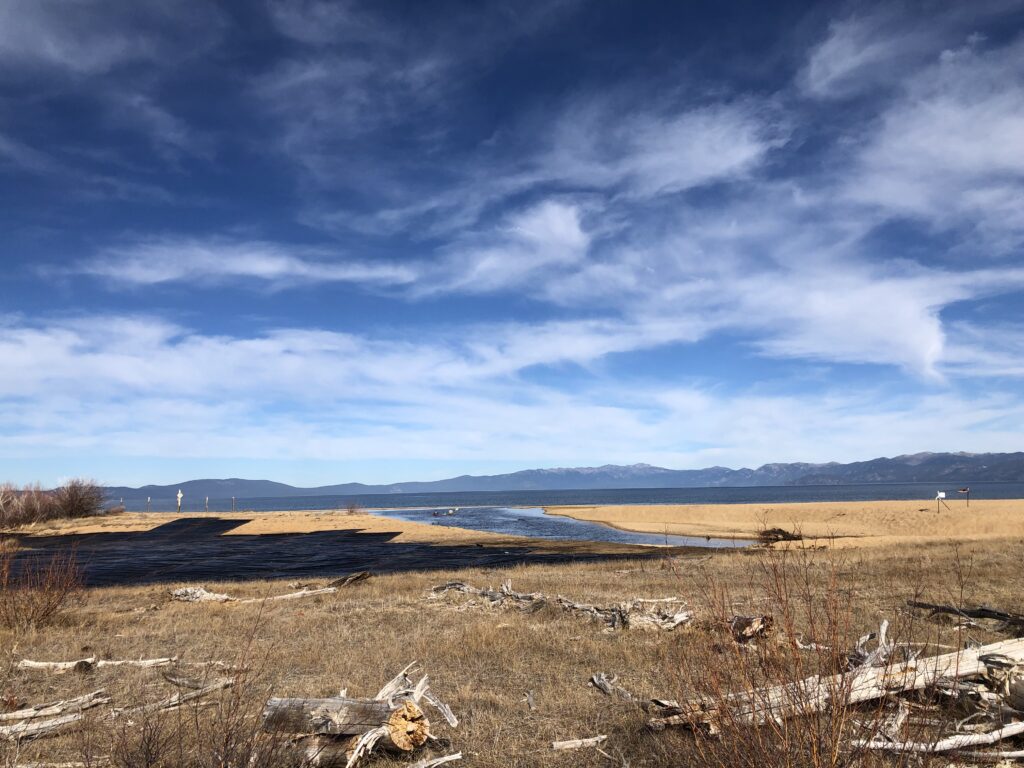
Photo Caption: Agencies restoring the Taylor and Tallac marsh areas have completed the installation of bottom barriers to remove 17 acres of invasive plants as part of the comprehensive restoration of one of the last natural wetlands in the Lake Tahoe Basin. Photo credit: Lisa Herron, USDA Forest Service LTBMU
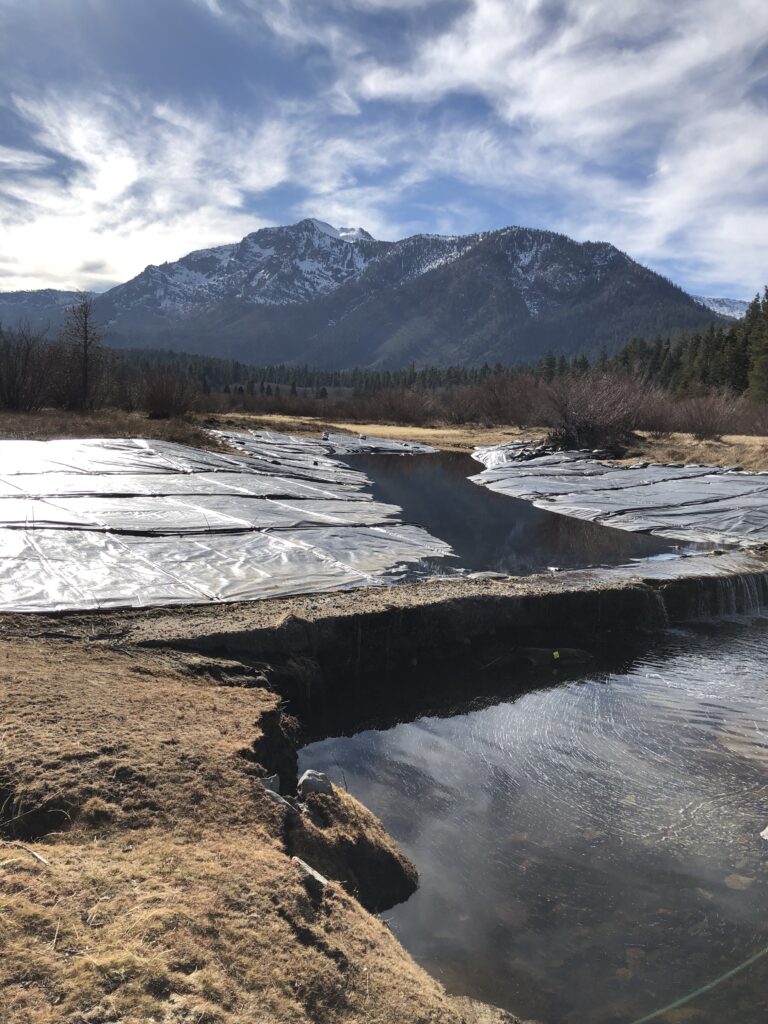
Photo Caption: The bottom barriers to remove invasive plants are expected to remain in place through 2026. Crews will be monitoring the area throughout the treatment to ensure the barriers remain in place. Photo credit: Lisa Herron, USDA Forest Service LTBMU
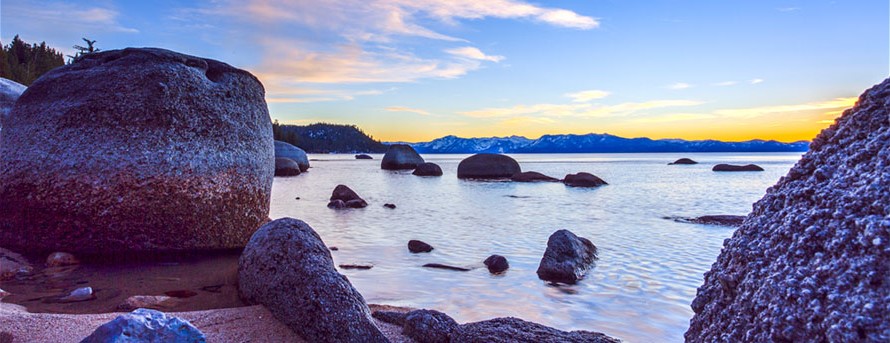
Aug 24, 2023
INTERAGENCY NEWS RELEASE
Contacts:
Jeff Cowen, Tahoe Regional Planning Agency, 775-589-5278
Lisa Herron, USDA Forest Service Lake Tahoe Basin Management Unit, 530-721-3898
LAKE TAHOE, Nev./Calif. – The Tahoe Regional Planning Agency (TRPA) Governing Board yesterday approved the USDA Forest Service Lake Tahoe Basin Management Unit (LTBMU) Chimney Beach Trailhead parking improvement project on Lake Tahoe’s East Shore. The project will help improve safety, reduce roadside parking, and enhance recreation in the popular State Route 28 corridor, the agencies said today.
The LTBMU project will expand the existing 21-space parking area to 130 spaces while partner agencies remove an equivalent amount of roadside and shoulder parking in the area, which will improve roadway safety, emergency response, recreation access, improve scenic quality in the National Scenic Byway, and reduce soil damage and erosion. It is estimated that more than 70 percent of fine sediment harming Lake Tahoe’s clarity is coming from roadways and urban upland areas.
Construction is expected to last through October 2023 with some construction activities to be completed early next summer. Although the parking lot will be closed, trails will remain open during construction.
“Improving safety and parking along the lake’s East Shore corridor is a high priority in our regional transportation plans,” TRPA Executive Director Julie Regan said. “The Chimney Beach parking lot is an integral component to remove parking off the road, reduce congestion, and provide residents and visitors safe access to public lands and the lake.”
The project is part of both the LTBMU’s SR-28 Shared Use Path, Parking, Safety, and Environmental Improvements Project and the Nevada State Route 28 Corridor Management Plan. The larger vision for the corridor includes additional parking management and technology, continuation of the East Shore Trail to Spooner Summit, more frequent transit and additional transit stops, and construction of a mobility hub at Spooner Summit.
“The East Shore contains some of the most scenic landscapes in the Lake Tahoe Basin and many popular remote recreation destinations,” said LTBMU Forest Supervisor, Erick Walker “These parking areas are generally at or above capacity during the summer season and parking overflows onto the highway shoulder. The project will address potential conflicts between pedestrians and vehicle traffic as well as the potential hindering of the movement of emergency vehicles.”
The upgraded parking area will be constructed with water quality Best Management Practices, or BMPs, to treat stormwater and runoff before it leaves the site as well as improved trash containment. Further improvements to the trailhead will include restrooms, transit pullouts, a pedestrian crossing, and infrastructure to support a future parking management system.
Thirteen partner organizations are involved in implementing the Nevada SR-28 Corridor Management Plan. Funding has been committed through federal and state sources as well as contributions from the Tahoe Fund, a nonprofit which has committed up to $3 million in private donations to projects in the corridor. Earlier improvements including the first section of the East Shore Trail from Incline Village to Sand Harbor Nevada State Park, which included successful removal of roadside parking in the corridor.
“These improvements are not just about providing safer and more accessible parking options,” Tahoe Transportation District Executive Director Carl Hasty said. “They are also laying the groundwork for a future parking management system. With a system in place, we can further enhance safety and reduce roadside parking around the Lake Tahoe Basin, making outdoor recreation more sustainable for everyone.”
Those interested can view the LTBMU SR-28 Corridor Management Plan: Decision Notice and Environmental Assessment. For more information on the project, contact Mike Gabor at mike.gabor@usda.gov.
###
The Tahoe Regional Planning Agency leads the cooperative effort to preserve, restore, and enhance the unique natural and human environment of the Lake Tahoe Region, while improving local communities, and people’s interactions with our irreplaceable environment.
The mission of the U.S. Forest Service, part of the U.S. Department of Agriculture, is to sustain the health, diversity and productivity of the nation’s forests and grasslands to meet the needs of present and future generations. The agency manages 193 million acres of public land, provides assistance to state and private landowners, and maintains the largest forestry research organization in the world. Public lands the Forest Service manages contribute more than $13 billion to the economy each year through visitor spending alone. Those same lands provide 20 percent of the nation’s clean water supply, a value estimated at $7.2 billion per year. The agency has either a direct or indirect role in stewardship of about 80 percent of the 850 million forested acres within the U.S., of which 100 million acres are urban forests where most Americans live. USDA is an equal opportunity provider and employer.
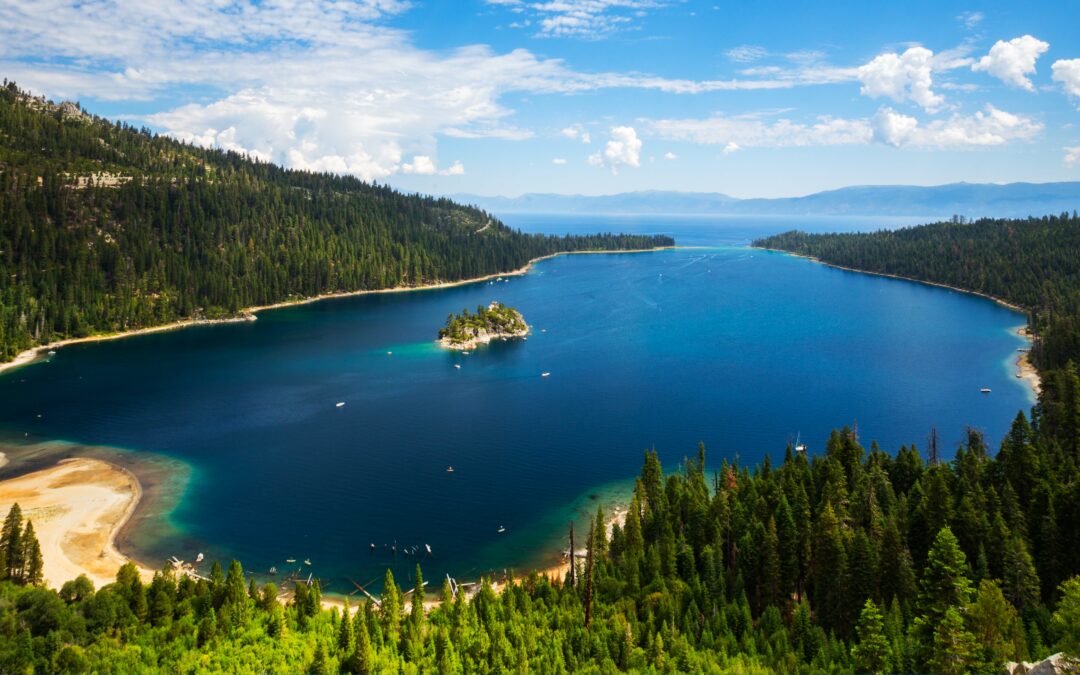
Aug 1, 2023
The 27th annual Lake Tahoe Summit will be held on August 9, 2023, at the Kings Beach Recreation Area from 10 a.m. to 12 p.m.
This year’s summit will highlight Tahoe’s Environmental Improvement Program, a successful bipartisan, bi-state collaboration among local, state, federal, and private entities. It will also examine the challenges that lie ahead in the face of climate change and increasingly unpredictable weather whiplash, as well as the growing demands on regional infrastructure.
U.S. Senator Alex Padilla of California is this year’s host and has been a key champion for Lake Tahoe in the U.S. Senate. In 2021, Padilla led the 25th annual Tahoe Summit and launched the first virtual exhibit to highlight the pioneering conservation work of the Lake Tahoe Summit.
WHEN: WEDNESDAY, August 9, 2023
WHO: California and Nevada Senators, Governors, and Congressmembers representing Lake Tahoe. Keynote address by House Speaker Emerita Nancy Pelosi. Open to the public.
PUBLIC REGISTRATION: Pre-registration is now closed. You can register at the event.
WHERE: Kings Beach State Recreation Area
SUMMIT PROGRAM: 27th Annual Lake Tahoe Summit Program: Sustainability and Stewardship in the Face of Climate Crisis
Here’s what you need to know for the event:
- There will be no on-site parking. Please use the free Summit shuttles from Tahoe City, Northstar, and Crystal Bay (details here), TART fixed-route buses, TART Connect, or walk or bike to the event. There will be a bicycle valet service courtesy of the Lake Tahoe Bicycle Coalition.
- Registration opens at 9 a.m. at Kings Beach State Recreation Area. After you check-in, you can browse the booths of various Tahoe organizations before the program begins at 10 a.m. After the program, you will have time to enjoy the booths and local food trucks from noon to 2 p.m.
- The event will also be live-streamed on Vimeo for those who are not able to attend in person. You can watch the event here.
If you have any questions or would like to request ADA parking accommodations, please contact Senator Padilla’s office at 202-224-3553.
The annual gathering is a chance for locals, agencies, government, and others to come together to discuss ways to improve the Lake Tahoe basin.
The Lake Tahoe Summit is free and open to the public. Due to limited on-site parking, attendees are encouraged to use public transportation or the complimentary shuttle service to get to and from the summit. There will also be a bicycle valet service courtesy of the Lake Tahoe Bicycle Coalition.
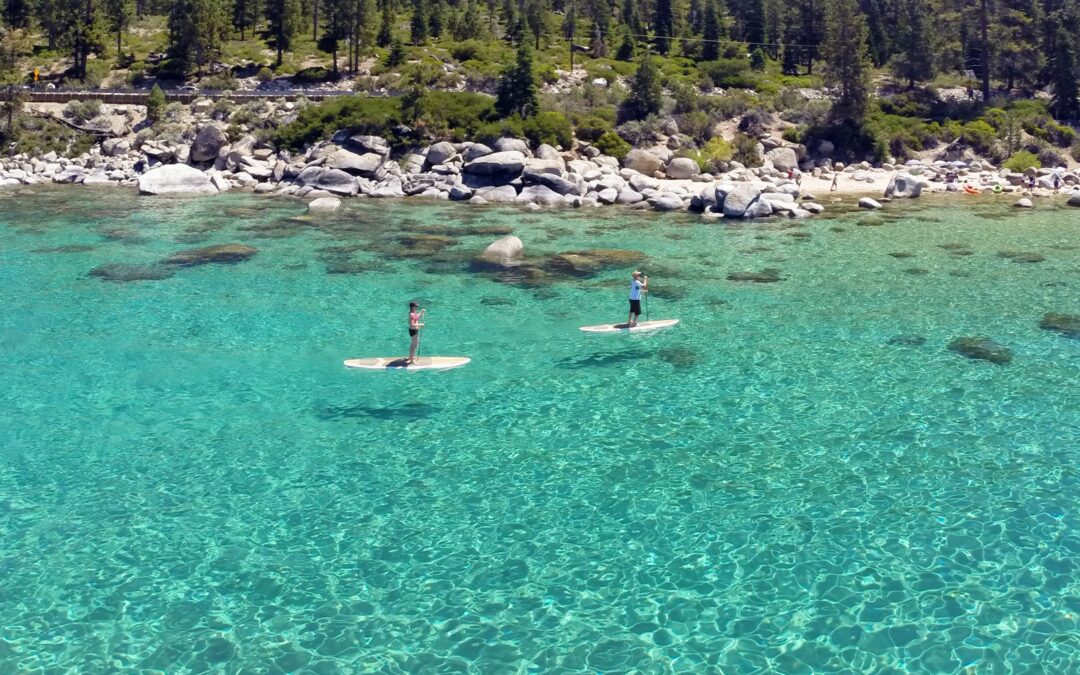
Jul 21, 2023
By Julie Regan

Julie Regan is Executive Director of the Tahoe Regional Planning Agency.
It feels like it was just a short time ago that this year’s mighty winter was still strong-arming Tahoe and the wet spring was keeping summer at bay. Now temperatures are climbing here and around the country like in Phoenix, Ariz. which earlier this week marked a record 19th straight day with heat over 110 degrees. On a different scale, climate change is impacting Lake Tahoe as well. Shoreline water temperatures hit 70 degrees this week and the lake’s average temperature is 1.4 degrees higher since 1970.
More extreme weather events like last winter’s historic storms are threatening water quality gains and underscoring the need to strengthen regional resilience.
Tahoe has no shortage of challenges. Achieving affordable housing, reducing wildfire risk, connecting Tahoe’s transportation system, and better managing recreation and tourism all require significant focus and attention, but safeguarding the health of the lake itself is a thread running throughout the Lake Tahoe Regional Plan and remains central to the work of the Tahoe Regional Planning Agency (TRPA) and our many partners.
While TRPA Regional Plan measures to limit development, manage growth, and protect and restore sensitive lands have helped stabilize lake clarity, climate change is driving emerging issues, the need for innovative science, and additional priorities for TRPA and the basin.
Stopping harmful practices that lead to a decline in clarity can only go so far. In 2010, basin partners brought forward a water quality restoration program called the Total Maximum Daily Load (TMDL) to reverse the trend and restore Lake Tahoe’s lost clarity. The study identified fine sediment and two nutrients (nitrogen and phosphorus) that help algae grow as the main culprits and helped us establish reduction targets and strategies.
A recent 10-year interim report on the TMDL is promising for the lake and our region’s climate resilience. Through stormwater Best Management Practices and other improvements, basin property owners and public agencies achieved a 23 percent reduction in pollutants. Now 600,000 lbs. of fine sediment are being kept out of the lake every year. Researchers also reported lake clarity rebounded for a short time last year to the clearest it has been in 40 years.
Meanwhile, aquatic invasive weeds and smelly, sometimes harmful, outbreaks of algae are being reported in certain areas. In addition to invasive weed control projects underway, TRPA is looking to researchers and the Tahoe Science Advisory Council for answers to algae problems.
As we increase our understanding of algae growth and explore possible connections between native microorganisms and lake clarity, there is broad agreement in the science community that advancing Lake Tahoe’s innovative pollutant reduction strategies will remain foundational even as the ecosystem reacts to rising temperatures and more extreme weather events.
Adding to water quality challenges, the lake’s vast depth and size cause it to hold particles and pollutants for a long time—650 years or more. A recent report comparing the concentration of microplastics measured in Lake Tahoe to other lakes points to this long hold time as a possible factor in the study’s findings. While the authors point to the need for additional research to understand the source and character of microplastics in Tahoe, we will continue to fight against littered beaches and local sources of plastic trash to protect the health of the lake.
Unlike fine sediment and algae-feeding nutrients, litter doesn’t require a sophisticated filtration system. It requires changes in behavior, better infrastructure, and on-the-ground management. Recent bans on single-use plastics in the City of South Lake Tahoe are positive steps forward, as is the launch last month of the first-ever Lake Tahoe Destination Stewardship Plan to better manage outdoor recreation and tourism. While overall development and capacity in the Tahoe Basin are closely managed, hotter temperatures and growing population centers are making Lake Tahoe a climate refuge, with traffic into Tahoe sometimes doubling when temps rise to 100 degrees a few hours away.
I’d like to express a special thanks to the volunteers and organizations that helped clean up our beaches after the Fourth of July this year. The mind-blowing amount of trash removed by League to Save Lake Tahoe volunteers, the TRPA Blue Crew, and Clean Up The Lake at Zephyr Shoals was more than disheartening. We must continue working together to take care of Tahoe and bring greater education, infrastructure, and enforcement to recreation sites around our precious lake.
To learn more about climate resilience and our regional water quality initiatives, visit clarity.laketahoeinfo.org.
–Julie Regan is Executive Director of the Tahoe Regional Planning Agency.

 By Kathleen McIntyre, Ph.D.
By Kathleen McIntyre, Ph.D.









